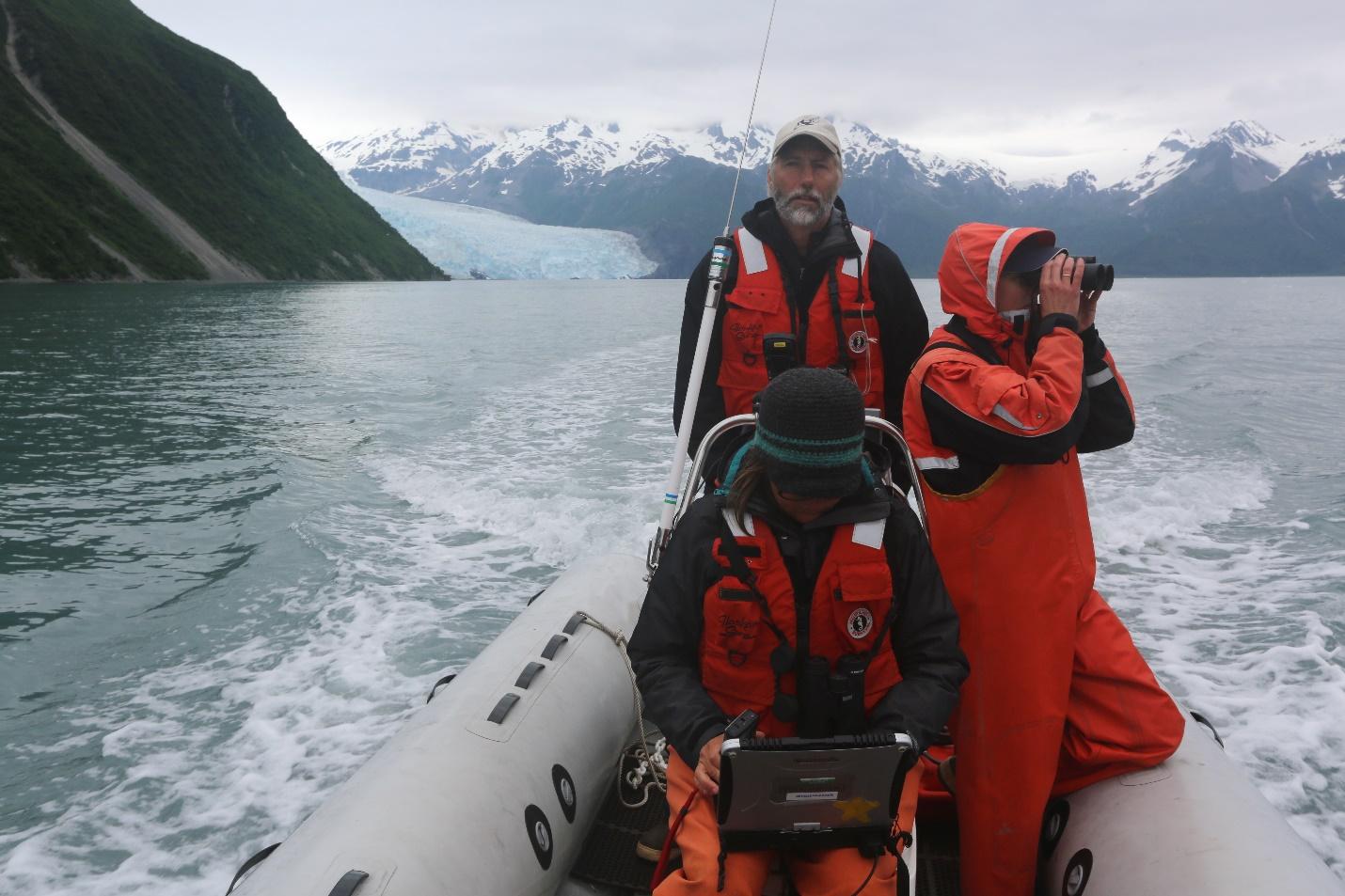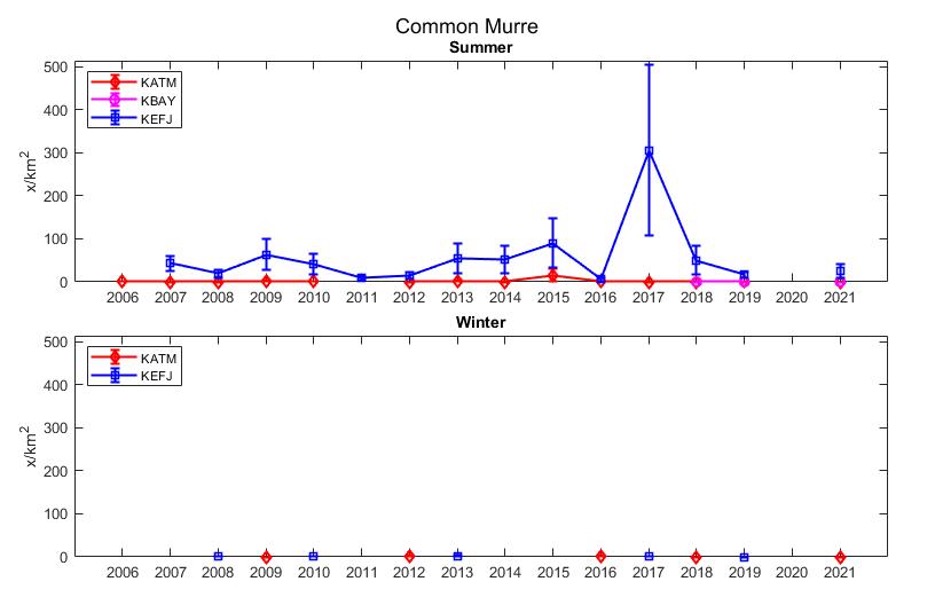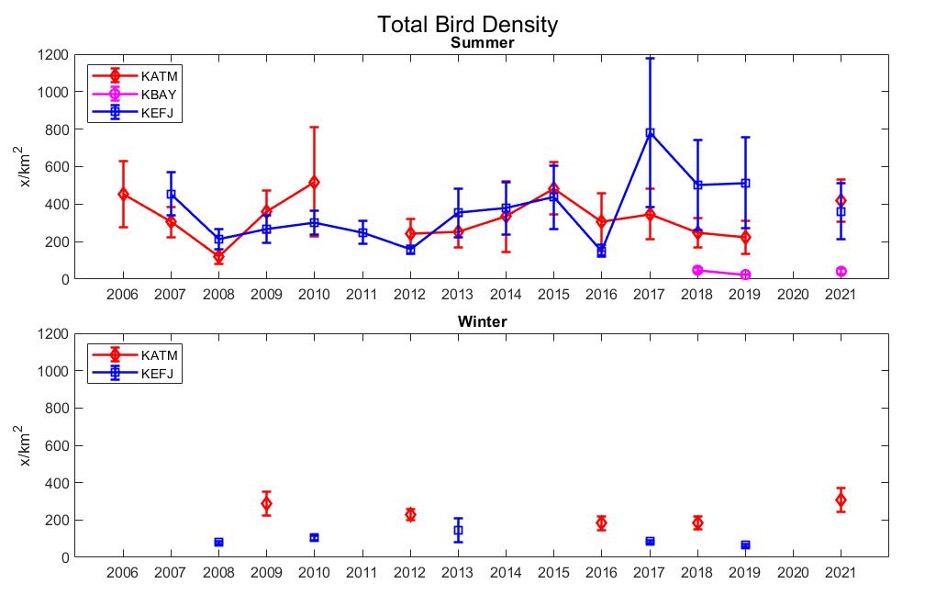Why are we monitoring?
Many marine birds rely on habitats and prey associated with the nearshore ecosystem of Alaskan coastlines. These species are top-level consumers of fish and marine invertebrates, such as mussels, clams, snails, and limpets. Because of these characteristics, these birds are good indicators of change in the coastal marine ecosystem. Our monitoring focuses on birds that have trophic links to the nearshore food web, such as sea ducks (harlequins, Barrow’s goldeneye, mergansers, and scoters) and black oystercatchers that consume benthic invertebrates, as well as other types of marine birds (e.g., pigeon guillemots, blacklegged kittiwakes, and cormorants) that occupy other marine food webs or habitats. Monitoring these various guilds simultaneously improves our ability to discriminate among potential causes of change in seabird populations and the nearshore ecosystem. For example, some of the species we monitor were impacted by the Exxon Valdez oil spill and exhibited protracted recovery periods as a consequence of lingering oil in nearshore habitats. Public concern exists for the welfare of marine birds because they are currently affected by an array of human activities. Marine birds can also provide windows into processes in marine ecosystems that are difficult to measure directly, such as change in forage fish abundance.
Where are we monitoring?
We monitor marine birds across a broad swath of the northern Gulf of Alaska within the area affected by the Exxon Valdez oil spill. Study regions include Kenai Fjords National Park (KEFJ), Kachemak Bay (KBAY), and Katmai National Park and Preserve (KATM) (Note: Western Prince William Sound monitoring is conducted by the Prince William Sound Marine Bird Population Trends project. We estimate density and distribution of a variety of marine species along coastal transects that are surveyed annually in summer. These same transects are surveyed during March, primarily to estimate density and distribution of sea ducks and other wintering birds in KATM and KEFJ.
How are we monitoring?
In KATM, KEFJ and KBAY, ecologists conduct skiff-based surveys along coastal (nearshore) habitats. We collect data that provide baseline information on species composition, distribution, and density for populations of marine birds and mammals that occur in nearshore waters. Summer surveys are conducted annually and winter surveys are conducted in either KATM or KEFJ in alternate years as weather permits. Marine bird surveys have been conducted in KATM since 2006, KEFJ since 2007 and KBAY since 2018.

SCIENTISTS CONDUCT NEARSHORE MARINE BIRD SURVEYS IN KENAI FJORDS NATIONAL PARK. PHOTO CREDIT: JIM PFEIFFENBERGER, NPS.
What are we finding?
Common Murre Nearshore Density Estimates Correspond to Die-Off Event
During the summer of 2015, we observed large increases in common murres along the coast relative to previous years. This increase was particularly evident in KATM. Our documentation of unusual murre distributions corresponded to observations of large die-offs of murres throughout the north Pacific in the winter of 2015-2016. We speculate that warmer water temperatures may have disrupted prey abundance or availability, leading to changes in murre distribution, behavior, condition, and mortality rates. Common murre density and distribution returned to pre-anomalous values in 2016.

Common murre density estimates in summer (top) in Katmai National Park and Preserve (KATM), Kachemak Bay (KBAY), and Kenai Fjords National Park (KEFJ) and winter (bottom) in KATM and KEFJ. Error bars indicate ±1SE.
Nearshore Marine Bird Community Structure
These surveys have also provided information about bird community structure at times and places that are not surveyed by any other program. From this analysis, we found variation in bird community structure at a regional scale suggesting that drivers of abundance of marine birds are inconsistent across the Gulf of Alaska. We also found variation in community structure by season within and across regions, suggesting that drivers of abundance of marine birds vary across the Gulf of Alaska as well. Community variation appears to be greater in the winter in both KEFJ and KATM. These initial findings point to important differences across regions and seasons.




